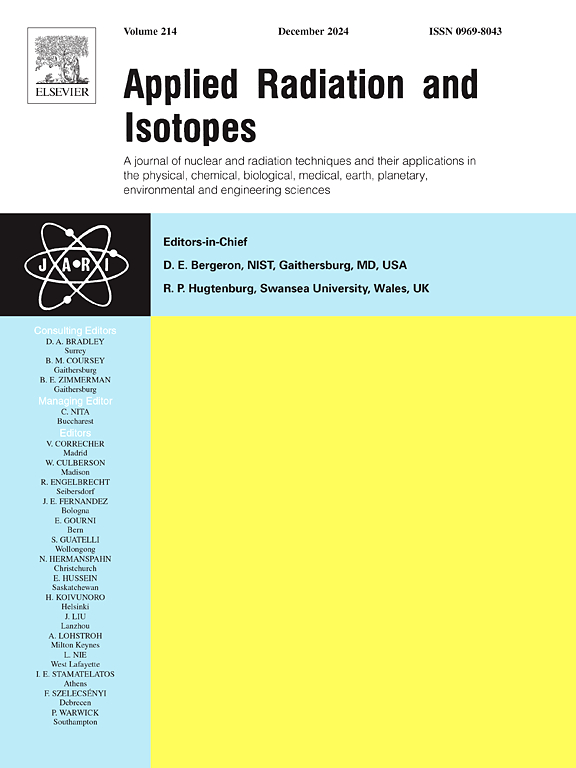跟踪气体放射性通过散裂中子源从起源到放电
IF 1.8
3区 工程技术
Q3 CHEMISTRY, INORGANIC & NUCLEAR
引用次数: 0
摘要
在ISIS散裂中子源上进行了一次演习,以定量跟踪放射性空气从产生气态放射性的机器区域到将气态放射性排放到大气中的排放烟囱的整个过程。计算和测量结果在因子~ 2范围内一致,考虑到所涉及的许多不确定性以及为了使操作易于处理而必须进行的近似和假设,这被认为是令人满意的。一个令人满意的推论是,ISIS内部气体活动的整个“生命周期”,从产生到排放,都得到了很好的理解。本文章由计算机程序翻译,如有差异,请以英文原文为准。
Tracking gaseous radioactivity through a spallation neutron source from origin to discharge
An exercise has been carried out at the ISIS Spallation Neutron Source to track quantitatively the progress of radioactive air all the way from the machine areas where gaseous radioactivity is generated to the discharge stack from which gaseous radioactivity is vented to atmosphere. Calculations and measurements have been found to agree to within a factor ∼2, which is regarded as satisfactory in view of the many uncertainties involved and the approximations and assumptions that have had to be made in order to make the exercise tractable. A satisfying corollary is that the entire ‘life cycle’ of gaseous activity within ISIS, from generation through to discharge, is well understood.
求助全文
通过发布文献求助,成功后即可免费获取论文全文。
去求助
来源期刊

Applied Radiation and Isotopes
工程技术-核科学技术
CiteScore
3.00
自引率
12.50%
发文量
406
审稿时长
13.5 months
期刊介绍:
Applied Radiation and Isotopes provides a high quality medium for the publication of substantial, original and scientific and technological papers on the development and peaceful application of nuclear, radiation and radionuclide techniques in chemistry, physics, biochemistry, biology, medicine, security, engineering and in the earth, planetary and environmental sciences, all including dosimetry. Nuclear techniques are defined in the broadest sense and both experimental and theoretical papers are welcome. They include the development and use of α- and β-particles, X-rays and γ-rays, neutrons and other nuclear particles and radiations from all sources, including radionuclides, synchrotron sources, cyclotrons and reactors and from the natural environment.
The journal aims to publish papers with significance to an international audience, containing substantial novelty and scientific impact. The Editors reserve the rights to reject, with or without external review, papers that do not meet these criteria.
Papers dealing with radiation processing, i.e., where radiation is used to bring about a biological, chemical or physical change in a material, should be directed to our sister journal Radiation Physics and Chemistry.
 求助内容:
求助内容: 应助结果提醒方式:
应助结果提醒方式:


